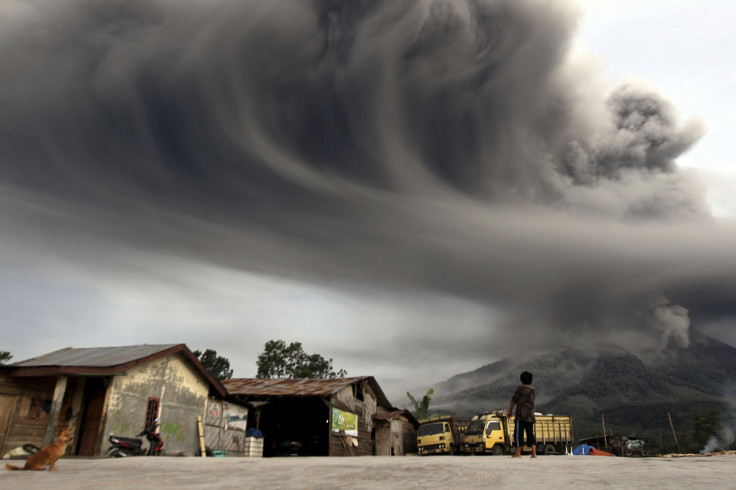Earth Moves Before Volcanic Eruptions, Scientists Discover
![Latest scenes of Iceland volcano eruption aftermath [PHOTOS]](https://d.ibtimes.co.uk/en/full/105612/latest-scenes-iceland-volcano-eruption-aftermath-photos.jpg?w=736&f=ae7056ba91b288c947abf1f80d724ed7)
The earth moves a significant amount before a volcano erupts, scientists have discovered.
Sigrún Hreinsdóttir, a geophysicist at the University of Iceland in Reykjavik, said she and her colleagues have established that Global Positioning System (GPS) instruments show the ground shifting ahead of an eruption.
"A GPS site can tell you not only that there's unrest at a volcano, but that it's about to erupt and then how high its plume will be," she told Nature magazine.
Researchers said GPS showed the ground moved an hour before the Grímsvötn volcano in Iceland erupted in 2011.
Published in the journal Nature Geoscience, the researchers believe this information will help emergency officials prepare for disasters by warning them when they need to evacuate nearby residents and close roads.
Being able to forecast how big a volcano's ash plume will be also allow authorities to re-route flights or close airports if necessary.
Grímsvötn caused major disruption to air routes, with planes in UK airports temporarily grounded on account of the huge ash cloud it produced.

Seismic equipment currently used can detect an impending eruption, as earthquakes can often precede volcanic eruption. However, only a GPS can tell you how big the plume spewed out will be.
Grímsvötn, Iceland's most active volcano, is difficult to monitor as it is buried under an ice sheet. The researchers put a GPS on a rocky outcrop of the volcano. It showed that shortly before the eruption, the machine moved over half a metre.
Scientists say the ground movement is related to pressure inside the chamber, which in turn relates to the height of the resulting ash plume.
Hreinsdóttir said: "If you had water in a balloon and squeezed it really hard, then the height of the water coming out of the balloon would correlate with how hard you were squeezing. It seems fairly simple, but we haven't been able to show that before."
They say their findings could be used to monitor remote volcanoes, but that there will be challenges installing the equipment and having the data streamed back to observatories.
The team also says they need to conduct further studies to ensure their theory is correct: "We need another eruption to prove we are right," Hreinsdóttir said.
© Copyright IBTimes 2024. All rights reserved.






